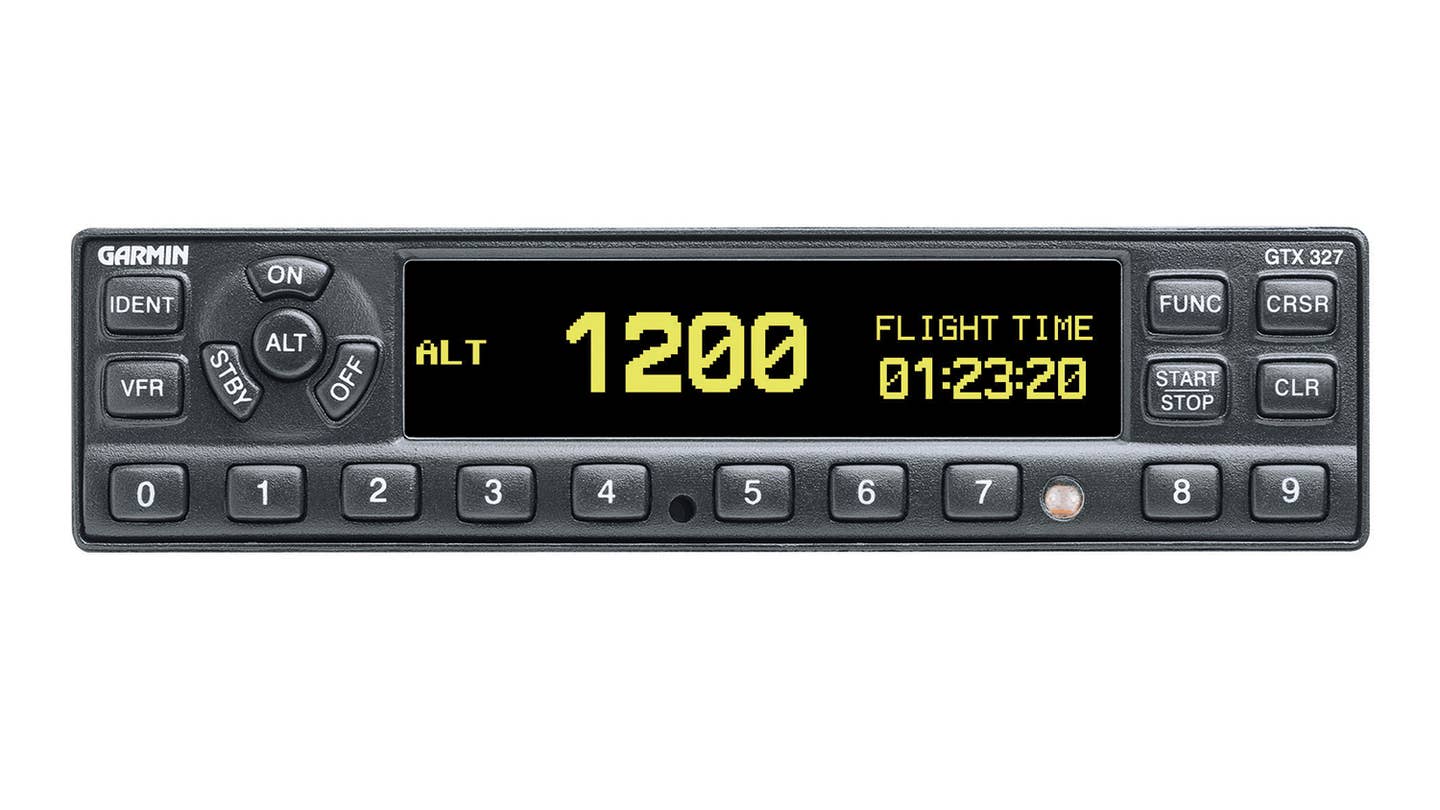
All about Mode C altitude reporting transponders. Garmin
Relevant Discussion: 91.215, 91.217, 91.135, 91.411, 91.413, 99.13, 121.345, 135.143, AIM 3-2-3, 3-2-4, 4-1-20, 5-6-4, 6-2-2, 6-4-2, FAA-H-8083-16, 8083-25
• Required for all aircraft in Class A, B and C airspace.
• Required for all aircraft in all airspace within 30 nm of an airport listed in appendix D, section 1 of Part 91 (Class B and military) from the surface upward to 10,000 feet msl.
• Notwithstanding the 30 nm rule, any aircraft that was not originally certified with an engine-driven electrical system or that has not subsequently been certified with one, or a balloon or glider, may conduct operations in the airspace within 30 nm of an airport listed in appendix D, section 1 of Part 91, provided such operations are conducted outside any Class A, B or C airspace area below the altitude of the ceiling of a Class B or Class C airspace area designated for an airport or 10,000 feet msl, whichever is lower.
• Required for all aircraft in all airspace above the ceiling and within the lateral boundaries of a Class B or Class C airspace area designated for an airport upward to 10,000 feet msl.
• Required for all aircraft (except any aircraft that was not originally certified with an engine-driven electrical system or that has not subsequently been certified with such a system installed, or a balloon or glider) in all airspace of the 48 contiguous states and the District of Columbia at and above 10,000 feet msl, excluding the airspace at and below 2,500 feet above the surface. [Note: §91.215(b)(5)(ii) also requires Mode C from the surface to 10,000 feet msl within a 10 nm radius of any airport listed in appendix D, section 2 of Part 91. However, appendix D, section 2 of Part 91 is “reserved,” and there are no airports listed.]
• Common squawk codes
1200 — VFR 1202 — Glider 1255 — Firefighting 1277 — SAR 7700 — Emergency 7600 — Lost communications 7500 — Hijack 7777 — Military interceptor 0000 — Military operations
• The Mode C transmitted must agree with the barometric altimeter within ±125 feet. [91.217(b)]
• The transponder, including Mode C and ADS-B Out, shall be operated at all times in all controlled airspace and all airspace specified in 91.215(b) unless otherwise authorized or directed by ATC. They should also be turned “on” (including Mode C and ADS-B Out) prior to movement on the airport surface. (AIM 4-1-20)
• An aircraft with an inoperative transponder may be flown to the airport of ultimate destination, including any intermediate stops, or proceed to a place where suitable repairs can be made, or both. The request to do this can be made at any time. [91.215(d)]
• For operation in any airspace listed above for an aircraft not equipped with a transponder, the request to operate must be made at least one hour before the proposed time. [91.215(d)]
• Mode C altitude transmissions are independent of the barometric altimeter. The transponder can get its information from one of two sources: an encoding altimeter, which transmits a pressure altitude reading to the transponder, or — more commonly — a blind encoder, an altimeter without needles or adjustment knob permanently set to 29.92 (pressure altitude). In either case, the altimeter setting does not affect the altitude the transponder sends. ATC’s computers apply the current altimeter setting to the pressure altitude received, converting it to msl (which should match your indicated altitude). Therefore, you cannot fool ATC by resetting your altimeter (of course, you could always fly the airplane a little higher or lower — that’ll fool ’em!). ATC will most likely ask you to “stop altitude squawk” if your indicated altitude and the altitude received by ATC differ by 300 feet or more. The transponder transmits pressure altitude to ATC in 100-foot increments.
• Ident button — Pressing the ident button (“squawk ident”) sends an extra pulse to ATC that causes your target to flash on the controller’s radar scope to help locate or verify your target. This should cause the reply light on the transponder to stay full bright for a few seconds, after which it resumes its normal spasmodic flashing as it is interrogated. Ident also sends a stronger signal useful in areas of weak radar coverage. If the controller asks you to ident, the best response is simply to state your tail number as you push the ident button. This button should never be pressed unless requested by ATC. It can also be used for communication, that is, to allow a pilot to respond if their radio transmitter has failed. If ATC thinks there’s a possibility you might be able to hear them, but not have the ability to transmit a reply, they may ask you to “squawk ident.” “Citation 321GO, if you can hear center, squawk ident.” Further instructions can then be acknowledged by pressing ident again.
• For flight in controlled airspace under IFR, altitude encoders must be tested and re-certified every two calendar years. [91.411(a)]
• Encoders typically use a lot of electrical power. In a situation where you lose an alternator, you might strongly consider turning off the Mode C function and notifying ATC.
• MODE S is required for TCAS II operation. Mode S has the same capabilities as Mode A and Mode C, and also responds to traffic alert and collision avoidance system (TCAS)-equipped aircraft. It provides the air-to-air datalink between TCAS II-equipped aircraft to coordinate resolution maneuvers. This ensures that the resolution advisory displayed in one TCAS II-equipped aircraft is compatible with the maneuver displayed in the other TCAS II-equipped aircraft.
Note: FAA regulations could change at any time. Please refer to current FARs to ensure you are legal.

Sign-up for newsletters & special offers!
Get the latest FLYING stories & special offers delivered directly to your inbox






